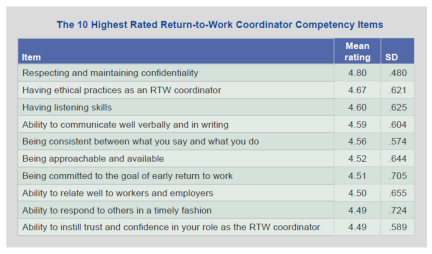
Return-to-Work: Accommodations not enough, process is key
For over a decade, The Center for Disability Research at Liberty Mutual’s Research Institute for Safety has researched return to work issues. While prior studies focused on formal work accommodations, such as modifying equipment, work schedules, etc. to create a successful Return-to-Work program, the Center’s findings suggest that return to work is best viewed as a process of adapting to a new situation for both worker and workplace.
According to Glenn Pransky, Director of the Center, the keys to a successful return to work program include:
Initial responses of the supervisor to the worker who reports an injury
Effective and appropriate treatment
The communication of the medical provider with the workplace
Work reintegration process that involves the worker, supervisor, medical provider and others
He also notes that the research has documented how inappropriate treatment
and accommodations can be harmful. For example, the early use of narcotics
for pain relief can lead to poor results in low back pain, one of the most
common reasons for Workers’ Compensation. The studies show that early use
leads to excessive time loss, unnecessary surgery and long-term dependence
on narcotics.
Return to work coordinators are also effective in decreasing disability
durations, lowering costs and achieving sustained Return-to-Work outcomes.
However, according to Pransky, their most important contributions have
little to do with Workers’ Compensation knowledge, medical information
or formal case management training, but are primarily related to listening,
communicating, gaining trust and staying focused on the ultimate goal of
returning to work. A survey found that the ten highest rated core competencies
for a Return-to-Work Coordinator were:

Research to Reality, Liberty Mutual Research Institute for Safety, 2009
Returning to work from an injury is an adjustment for both the worker and the workplace. While treating people right and providing support seems like a no-brainer, it is easier said than done. An established process with support and engagement for all involved will help ensure its success.